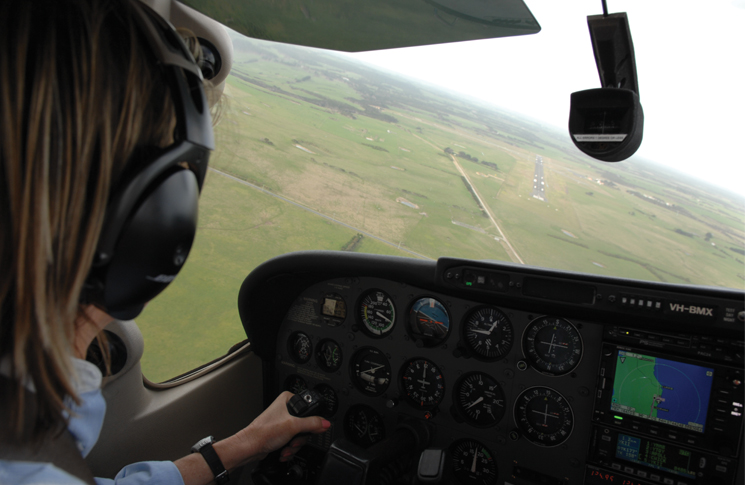1 In airspace where ATC approval is not required to change level, the pilot of an IFR aircraft intending to change level must:
- report position, level and intention to ATC approximately one minute prior to making any change
- report the intention to ATC at least 2 minutes prior to making the change
- broadcast position, level and intention approximately one minute prior to making any change
- broadcast the intention at least 2 minutes prior to making the change
2 For VFR flights by day or night, one of the criteria under which visual approaches may be authorised by ATC is that the aircraft must be within:
- 3 nm of the aerodrome
- 5 nm of the aerodrome
- 10 nm of the aerodrome
- 30 nm of the aerodrome
3 When cleared for a visual approach, the track/heading authorised by ATC must be maintained until:
- within 3 nm of the aerodrome and with the aerodrome in sight
- by day, within 5 nm and, by night, 3 nm and with the aerodrome in sight
- within 3 nm of the aerodrome by day or night
- the aerodrome is in sight
4 An aerodrome frequency response unit (AFRU) improves safety by confirming the aircraft’s radio is working and the pilot has selected the correct frequency for an aerodrome. An AFRU is activated by:
- saying ‘request AFRU ident’
- making a transmission for more than 2 seconds
- clicking the microphone 3 times in 5 seconds
- clicking the microphone 5 times in 3 seconds
5 A VFR flight must be able to navigate by visual reference to the ground or water when:
- below altitude A020 and must be able to fix the aircraft’s position by features on topographical charts at intervals of at least 30 minutes
- at or below 2000 ft AGL and must be able to fix the aircraft’s position by features on topographical charts at intervals of at least 30 minutes
- below altitude A020 and must be able to fix the aircraft’s position by features on topographical charts at intervals of at least 60 minutes
- at or below 2000 ft AGL and must be able to fix the aircraft’s position by features on topographical charts at intervals of at least 60 minutes
6 When navigating by visual means in controlled airspace, a pilot must notify ATC when the aircraft diverges from the track approved by ATC by more than:
- 3 deg
- 3 nm
- 1 deg
- 1 nm
7 The mode 3A transponder code for RPAS in in E airspace is:
- 7000
- 7100
- 4000
- 7615
8 An aeroplane takes off in calm conditions but soon experiences a strong tail wind. What initial effect will this change have on IAS and flight path?
- higher IAS and aircraft climbs
- lower IAS and aircraft climbs
- higher IAS and aircraft sinks
- lower IAS and aircraft sinks
9 The engine operating conditions most likely to produce fouling of spark plugs are:
- rich mixture and high power setting
- rich mixture and low power setting
- lean mixture and high power setting
- lean mixture and low power setting
10 Which of the following flight instruments would best enable a pilot to differentiate between a spin and a spiral dive?
- compass
- ASI
- Altimeter
- VSI
11 To maintain VMC when flying OCTA at 4500 ft AMSL, the minimum horizontal separation from cloud is:
- 1000 m
- 1500 m
- 2000 m
- 2500 m
12 At what stage of a flight should you change from area QNH to local QNH (if available) when descending from A075?
- 10 nm from destination airport
- 3 nm from destination airport
- at top of descent
- immediately before joining circuit
Answers:
- (a) AIP ENR 1.7 4.2.1
2. (d) AIP ENR 1.1 2.11.3.1.a
3. (b) AIP ENR 1.1 2.11.3.4b
4. (c) B will also activate the AFRU if the aerodrome traffic frequency has not been used for the past five minutes. AIP GEN 3.4 3.4.3
5. (b) AIP ENR 1.1 4.2.1b
6. (d) AIP ENR 1.1 4.2.c
7. (a) 7000 for RPAS in all classes of airspace and when instructed to enable transponder. AIP ENR 1.6 7.1.4 j
8. (d)
9. (b)
10. (b) high-speed descent in a spiral dive
11. (b)
12. (c)



Comments are closed.